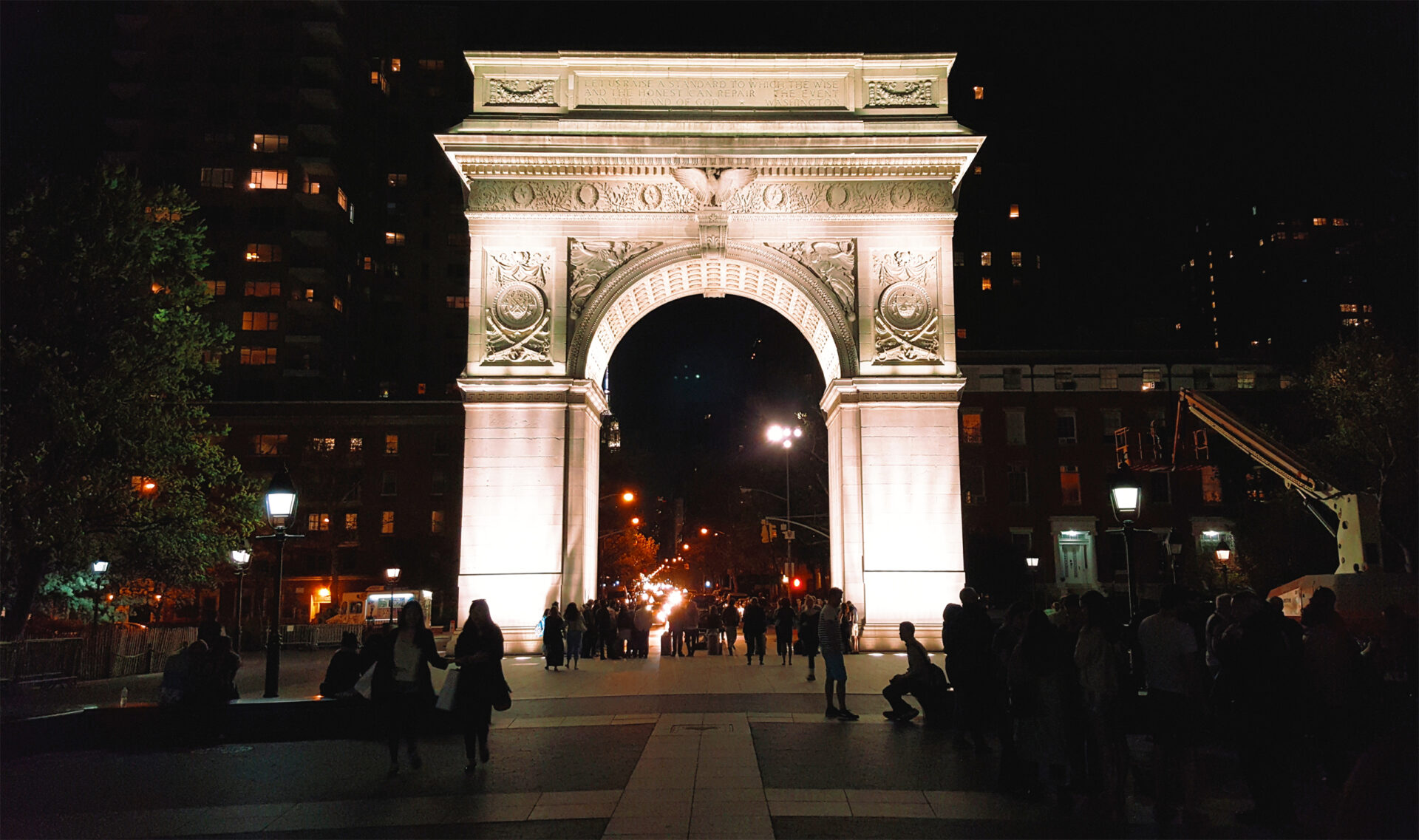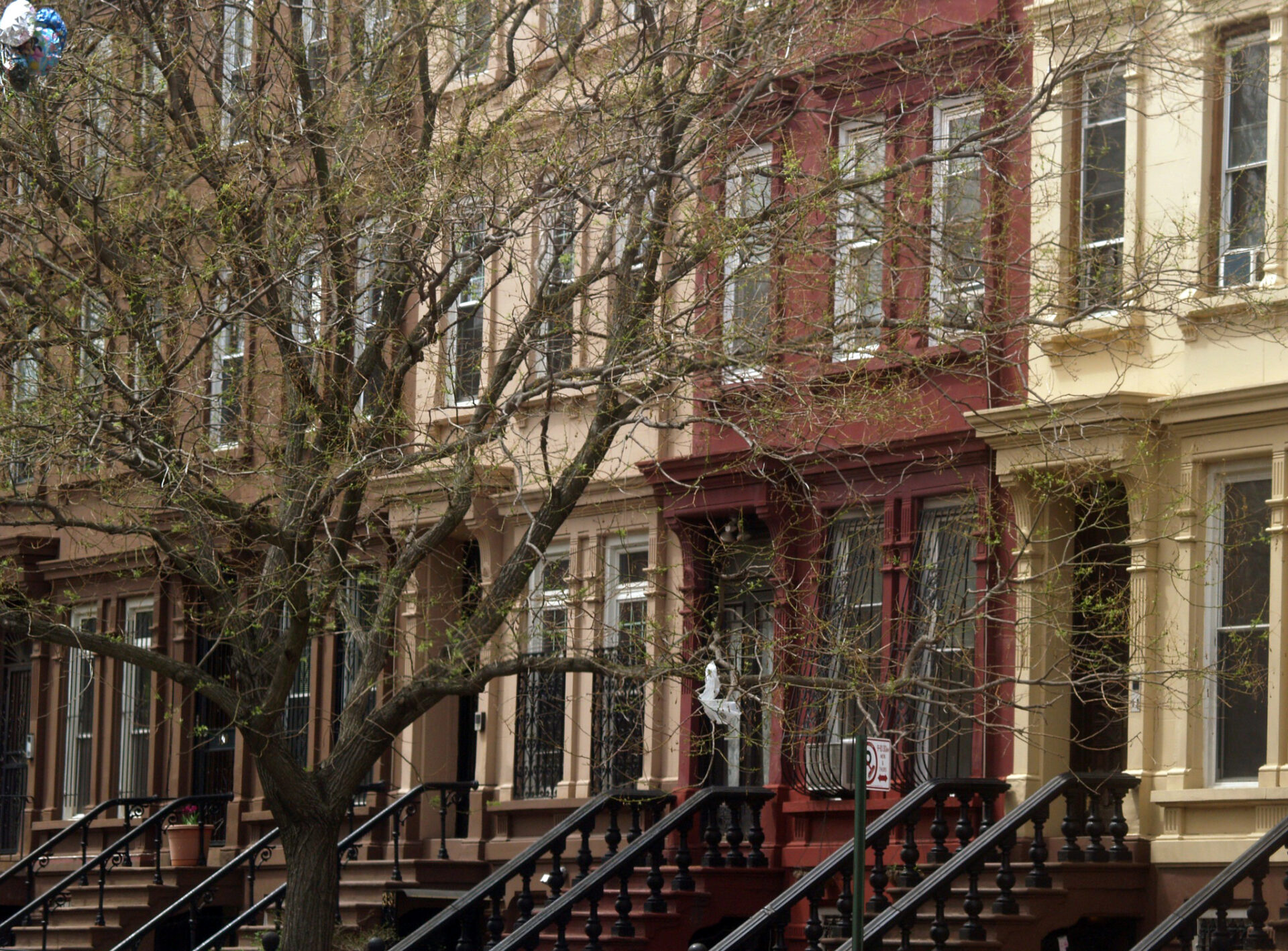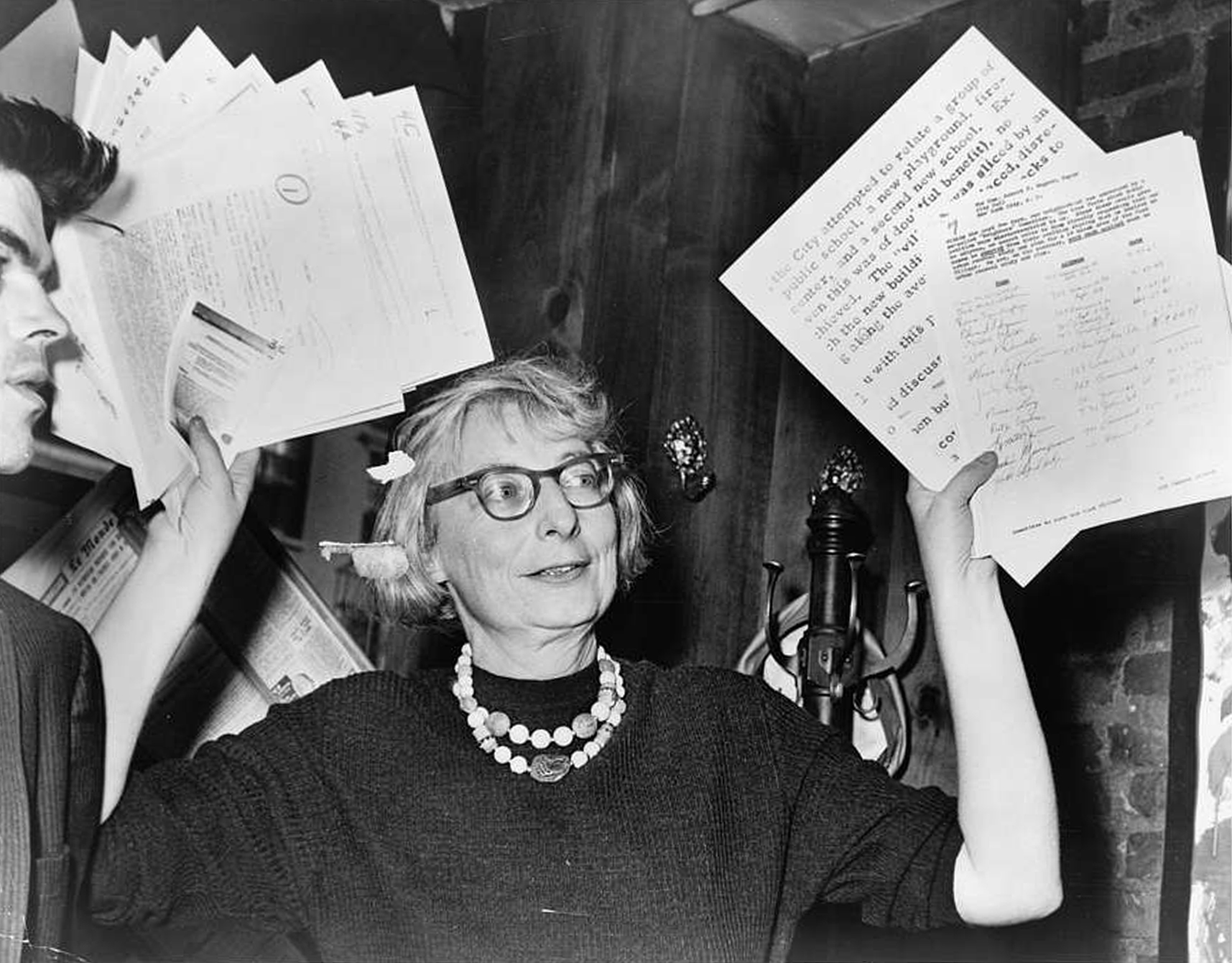During the uprising following the death of George Floyd, New York City’s Washington Square Park became a jumping-off point for protests and a site of congregation and parties afterwards. Located in Manhattan’s West Village, an affluent neighborhood in the shadow of the vast monolith of New York University and its sprawling real estate, the park has for many years now been a popular gathering point for parties that regularly go on until its official midnight closing time, especially amongst young people of color.
But in late May, the New York City Police Department declared that the park would close two hours early on weekends, at 10pm instead of midnight. The decision was made unilaterally, with no input from or indeed consultation with the city’s Parks Department or the Mayor’s office, although the latter unconditionally defended the move after the fact. While some predominantly wealthy residents in the area had been calling in noise complaints, this abrupt decision to change park policy was unprecedented, taken wholly by a separate agency, on behalf of people to whom the park does not actually belong. At an “emergency” meeting held by the local NYPD 6th Precinct on June 14th, Stephen Hughes, Commanding Officer of Manhattan South, asked local residents for a show of hands as to who wanted the earlier closing to continue, while deliberately locking young people out of what was advertised as a community meeting. Those who were permitted to attend, some of whom referred to revelers as “criminals” and “drug people”, were largely in full support of the measure, and potentially others, such as banning music in the park outright. Even still, the following week, the police decided to reverse the change in hours following public outcry.

Washington Square Park at night
Linh Nguyen/Flickr
In the West Village and many other places like it, “neighbors” has become a sort of precious social relation, owing to some residents’ seeming insistence on seeing neighborhood character as little more than a one-dimensional cultural function. The broadly anti-development West Village Residents Association, formed in 2011, lists among its goals “the improvement of the residential quality of life in our neighborhood by reducing the noise created by restaurants, bars, and clubs” so as to be “consistent with the neighborhood’s residential and historical character.” Other group interests include “community policing” and “the preservation and maintenance of public space.” But while historic and other forms of neighborhood preservation, are ostensibly geared towards preventing the ills of gentrification by hindering new development, they instead frequently exacerbate these ills, and often prove little more than a tool of lucrative xenophobia, preserving public spaces only for the correct people, of the correct racial and class strata. Furthermore, these preservation initiatives purport to capture some imagined authenticity or essence – historical, geographical, and social – while erasing the conflict which necessarily underpins it.
In New York City, historic preservation is officially designated by the Landmarks Preservation Committee (LPC) and can be applied to either an individual building or landmark or a “historic district” comprising the entirety of a given area – the latter function is more our focus here – following a period of public comment. The term “neighborhood preservation” is somewhat more ambiguous: it sometimes refers to nonprofit or government programs of affordable housing and community services; or, conversely and less formally, the work of often-exclusionary neighborhood associations that are primarily concerned with things like safety and neighborhood character, and whose aims often go hand in hand with historic preservation. While historic preservation is technically an administrative determination by the city, the responsibility for deciding which neighborhood character is preserved falls de facto to the current residents of an area, whoever they may be.
Truthfully, there is nothing specific that qualifies these particular individuals to make such decisions. And so, in practice, this “historic preservation” often amounts to an arbitrary declaration of history that essentially harks back to the particular moment in time when these existing residents arrived. By the same measure, the community-driven “neighborhood preservation” that typically incorporates this “historic” designation also tends to involve a similarly arbitrary declaration of what a given neighborhood is.
But there is nothing inherently precious about a city block. Neighborhoods themselves are constituted in the first instance by economic forces, and their evolution should be dictated not by history – or an even more ambiguous determination of character – but by an equitable vision for the future.
Famed urbanist Jane Jacobs led the Committee to Save the West Village, and her advocacy of neighborhood preservation was focused on that area as it existed in the 1960s, when her work was first published. In The Death and Life of Great American Cities, she wrote that public parks are crucial to public city life as long as they are used by a mix of people for a mix of purposes; that these spaces become dangerous when underutilized, but in fact prevent crime when taken full advantage of. Yet it is unclear how this thesis holds up when that precise effect – the mixed use of public green space for vibrant social life – is itself designated a crime. In fact, this criminalization of public life in some ways merely takes the kinds of neighborhood preservation initiatives Jacobs advocated for to their logical conclusion. As an attempt to keep out the new via some imposed historical stasis, “preservation” is not defined in the absolute: there is necessarily someone who dictates what is preserved, and at what expense. Nor is preservation meant to occur simply for its own sake: when some element of the past is fossilized for future consumption, there is always a desired future result. As Kevin Lynch wrote, “Choosing a past helps us to construct a future,” to which Dolores Hayden adds, “The task of choosing a past…is a political act as well as a historical and cultural one.”
Some preservation initiatives do sincerely aim to safeguard things like affordable housing or prevent harmful overdevelopment; others – as evidenced in the example of the West Village – are more explicitly exclusionary. With that said, historic preservation initiatives do not only occur in wealthy white areas. On the contrary, many such programs originate at least nominally in an effort to maintain the landscape of working-class, non-white histories, such as in Brooklyn’s Bedford-Stuyvesant, a historically Black neighborhood of distinctive brownstone architecture, 16 blocks of which were proposed as a new historic district by the LPC in 2013 based on the Commission’s determination of “buildings and other improvements which have a special character and a special historic and aesthetic interest.” But many opponents at public hearings pointed out that such efforts to preserve community often prove counterproductive: when historic architecture is preserved and local parks maintained within an environment rife with economic inequality and speculation, property values increase. The end result is that only those who can pay for such an authentic historical experience can afford to live in the area: frequently a different demographic than that which forged it in the first place. Indeed, Brian J. McCabe and Ingrid Gould Ellen’s 2016 detailed statistical study based on New York, “Does Neighborhood Preservation Accelerate Neighborhood Change?”, found that: “neighborhoods that comprise historic districts experience an increase in socioeconomic status relative to other nearby neighborhoods after designation.” They note that Brooklyn Heights, New York’s first official historic district designated by the LPC in 1965, is now one of the city’s most expensive neighborhoods, a pattern that is also borne out elsewhere in the five boroughs. Historic authenticity, then, becomes a question of the kind of “neighborhood character” that is easily advertised on real estate websites, to be affirmed only by its eventual consumers.
What can be materially “preserved” are not abstractions like “character” or “authenticity”, but only the material elements of a given area, like architecture and parks, as occurs in formal historic preservation. This would suggest that, by extension, those abstracted traits, and indeed history itself, are not only made real in the built environment but also determined by it. But this is not strictly the case. As Zach Mortice writes in an op-ed for The Architect’s Newspaper last year, buildings function more as “faithful stenographers…the result of political actors working in a given economic and cultural context.” Moreover, something as amorphous as neighborhood character is neither fixed nor necessarily positive. When rioters looted Soho in 2020, part of their motivation may have been that neighborhood’s character: cartoonishly inaccessible and commercial, an ideal target for people looking to both disrupt the flow of capital and score a new Rolex. But in doing so, did they not also affect that character, fundamentally change it, even if temporarily? If not, what else does neighborhood character mean?
If we understand neighborhood character literally as a means of characterizing a place, we might refer to Doreen Massey’s suggestion that “Instead…of thinking of places as areas with boundaries around, they can be imagined as articulated moments in networks of social relations and understandings, but where a large proportion of those relations, experiences and understandings are constructed on a far larger scale than what we happen to define for that moment as the place itself.” Which is to say, to the extent that “neighborhood character” even exists, it is constituted by anything but some immutable truth of the neighborhood as such. Rather, a neighborhood often only goes from amorphous abstraction to something real in the moments when its residents interact with the mechanisms of capitalist development that necessarily contour any given geographic area.

Brownstones in the Bedford-Stuyvesant nieghborhood of Brooklyn.
Bonnie Natko/Flickr
The unavoidable contradictions of neighborhood character find a more on-the-nose manifestation in discussions of homeless shelters, which are frequently opposed by local residents who voice sympathy for the unhoused while insisting that although of course they should be provided services, those services should be provided elsewhere. Across Manhattan, such debates have increased in voracity since the coronavirus pandemic prompted Mayor Bill de Blasio to attempt to house more of the city’s homeless, either temporarily or permanently, prompting neighborhood groups such as the Hell’s Kitchen Neighborhood Association and the Financial District Neighborhood Association to push back on the municipality establishing shelters in their respective areas. This is a common touchstone of “Not In My Back Yard,” (“NIMBYism”) seeking to preserve neighborhoods as they are, free from the scourge of poor and often non-white outsiders, purportedly for the safety of the local “community.”
Opposition to NIMBYism has often tended to be lazily lumped in with the nominally pro-housing YIMBYism movement, which employs the vulgar and demonstrably incorrect argument that even expensive housing will drive down rents for everyone by virtue of supply and demand. But economically, of course, the end result of both YIMBY and NIMBY solutions is more or less the same: preciously-guarded historical neighborhood character and wanton unregulated development are both, by nature, exclusionary to anyone who cannot afford their higher price points. Dogmatic neighborhood preservation just adds a layer of exclusion, characterized by the expectation of a certain neighborliness based on anything but good faith.
There is nothing special about a neighborhood grounded in exclusion. What can make a neighborhood special, vital, worth “preserving” in any capacity is not some elusive, ineffable fact of the thing itself, but its residents’ capacity to care for and defend one another against encroachments of power based on a shared desire for communal life, something which goes way beyond mere geographic proximity. Where that desire is absent or confined by race or zip code, there is little character to preserve. When tenants organize to prevent eviction, or local residents work together to keep the police away, what can result is something arguably more akin to community – the sort of thing the LPC can’t recognize, nor would many formal neighborhood associations care to.
To that last point, it’s interesting to note that, especially in conversations about safety, “neighbors” is often used almost interchangeably with “community” when in fact their meanings are distinct in important ways. A neighborhood refers to a geographic area, delineated at least roughly by discernable boundaries within an urban landscape. Community speaks to a collection of people rather than streets; as distinct from neighbors (the occupants of a neighborhood and a reference to proximity) community is less materially bounded, cohering instead around commitment to a shared activity or dedicated interest. This holds true etymologically as well: “neighbor” is derived from the Old English nēahgebūr, a compound of “neah” (near) and “gebur” (inhabitant or farmer), i.e. someone living nearby; “community,” meanwhile comes from the Latin communitas, which originally derives from a compound of “co” (together) and “munus” (service), i.e. collective service. Which is to say, if the roots of the words are anything to go by, a neighborhood can only be synonymous with a community if its inhabitants actually commit to supporting each other and serving their fellow neighbors.
There’s another question begged by all of the above: what is history if not full of tensions and conflicts, both economic and political, all of which are what effectively drive society over time? Read in that way, it’s difficult to imagine history ever being truly “preserved,” especially in such a dynamic and changeable context as a place, and even more so if that preservation attempts to gloss over the very contradictions that propel it forward. But this erasure is precisely the aim of historic and neighborhood preservation efforts when their proponents insist on an imagined authenticity of days gone by. Most people can’t afford to live in such an arbitrarily constructed, depoliticized urban idyll. And any meaningful common existence, geographic or otherwise, would necessarily reject such a dubious luxury.

